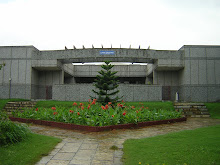The new rates will include the claim experience of individual companies and will be based on 2006-08 data.
The Mortality and Morbidity Investigating Centre (MMIC), an affiliate of the Institute of Actuaries of India (IAI), plans to publish the mortality table by October. The institute has been working on the table for the last six months.
Data and statistics are currently being collected from various insurance companies though a handful of large players, including government-owned Life Insurance Corporation of India, are yet to submit data, said IAI President G N Agarwal.
With the risk perception falling, premium rates, which are based on mortality rates, are expected to fall as well. “Over the years, life expectancy has increased, mortality has come down drastically and this gives a room for the rates to drop,” said Agarwal, who is the chief actuary of Future Generali India Life Insurance Company, a joint venture between the Future Group and Italy’s Generali.
Agarwal said over the last 12 or 15 years, according to data available so far, mortality rates have come down by 25 to 30 per cent in the higher age brackets, which may translate into a reduction of 15 to 20 per cent in certain segments.
While the impact will be felt most on term covers, unit-linked insurance plans are also expected to see an impact, but only on the insurance component. In the case of endowment policies, the impact is likely to be on bonus payments on certain policies, since 8 to 9 per cent of the premium is linked to mortality rates.
“Term and savings-cum-life endowment (policies) are likely to see a reduction in premiums, while on the other side, rates on annuity products may go up. Insurers have already factored in the anticipated improvement in their mortality table,” said SBI Life Appointed Actuary Sanjeev Pujari.
The new tables are likely to provide data for various product categories and on the experience of individual insurers, since it would be based on the sex, age and geography, among other factors. At present, the tables only provide the mortality rate per thousand.
For instance, according to the Indian Assured Lives Mortality (1994-96), which has been in effect since January 2005, for people who are 40 years old, the probability of their death is 2.053 per 1,000. For 60 year olds, the probability is 13.073 per 1,000, which results in a higher premium.
The new table is expected to provide additional data by classifying customers into various segments on the basis of economic groups as well, making pricing according to their profile possible.
Pujari added that since the industry was opened in 2000-2001, private insurers have enough experience to contribute to the table.
“Some actuaries have been reducing premium rates for life covers over the last few years as life expectancy has increased. I don’t expect the new table to reduce the premium rates drastically,” said ICICI Prudential Life Insurance Appointed Actuary Abhijit Chatterji.
However, actuaries said the new table would be predominantly based on LIC data, since private insurers would not have rates for ages beyond a particular limit. Private sector insurance companies have a relatively younger client base and therefore have data for fewer age groups.
Once the tables are finalised, apart from the industry-wide data, Insurance Regulatory and Development Authority has also agreed to allow companies to decide the premium based on their experience, which would be based on their own tables.
